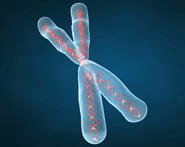


 النبات
النبات
 الحيوان
الحيوان
 الأحياء المجهرية
الأحياء المجهرية
 علم الأمراض
علم الأمراض
 التقانة الإحيائية
التقانة الإحيائية
 التقنية الحيوية المكروبية
التقنية الحيوية المكروبية
 التقنية الحياتية النانوية
التقنية الحياتية النانوية
 علم الأجنة
علم الأجنة
 الأحياء الجزيئي
الأحياء الجزيئي
 علم وظائف الأعضاء
علم وظائف الأعضاء
 الغدد
الغدد
 المضادات الحيوية
المضادات الحيوية|
Read More
Date: 2025-02-20
Date: 21-2-2016
Date: 2025-02-13
|
Based on the MS clinical courses, the disease can be divided into the following main types (Simon et al., 2009):
(1) Relapsing-remitting MS (RR-MS): (85 %)
Is used to describe neurological symptoms that usually appear as an exacerbation (attacks, worsening of symptoms) of the disease, then these abnormalities improve, and the patient is said to be in remission (relief). MS may be clinically inactive (sub-clinical) for months or years, between any number of intermittent attacks. While the disease process is ongoing and the damage continues, this course shows a high rate of inflammatory lesion activity (Johnston Jr et al., 2001).
(2) Secondary progressive MS (SP-MS): (80 %)
patients with multiple sclerosis (80) % of patients with RRMS in a period ranged between10–15 years after the diagnosis to have RRMS develop secondary progressive MS (SPMS). Moreover, they are characterized by axonal damage and atrophy in white and grey matter, with a likely underlying neurodegenerative pathogenesis but less inflammation (Mahad et al., 2015 and Lassmann et al., 2012).
The difference between RRMS and SPMS is that RRMS has periods of flares and part of remissions. It is determined as full recovery, while SPMS frequently has no relapse periods, but their symptoms are getting worse (Atiyah , 2022).
(3) Primary progressive MS (PP-MS):
A small percentage of MS patients (10–15%) develop gradual disability from the beginning of an illness. Primary progressive MS is the name for this type of MS (PPMS). Patients frequently have gradual spastic paraparesis. Axonal loss and microglial activation are common in this pathogenic characteristic, accompanied by atrophy. Anterograde and retrograde neurodegeneration are accompanied by oxidative stress and energy failure (Miller & Leary, 2007).
(4) Progressive-relapsing MS (PR-MS):
The disease tends to be progressive from the onset, punctuated by acute relapses. The periods between relapses are characterized by continuing progression. It is considered as a rare clinical course with a high mortality rate. (Rolak, 2010; Blumhardt, 2004 and Aminoff, 2002) finally, there is debit about the existence of this disease course(Amezcua, 2022).
5) Special in entity MS: Clinically-isolated syndrome (CIS):
Clinically isolated syndrome (CIS) is a kind of acute clinical episode that occurs in around 80% of MS patients and can progress to relapsing-remitting MS (RRMS). Patients with CIS who had a normal MRI scan at baseline had a 21% chance of transitioning to RRMS at 20 years, while patients with one or more clinically silent white matter plaques on MRI had an 82% chance (Milo & Miller, 2014).
References
---------------
Amezcua, L. (2022). Progressive Multiple Sclerosis. CONTINUUM: Lifelong Learning in Neurology, 28(4), 1083-1103.
Aminoff, M. J. (2002). Electrophysiological evaluation of root and spinal cord disease. In Seminars in neurology (Vol. 22, No. 02, pp. 197-204). Copyright© 2002 by Thieme Medical Publishers, Inc., 333 Seventh Avenue, New York, NY 10001, USA. Tel.: + 1 (212) 584-4662.
Atiyah, H. L. (2022). Role of immunologic and genetic markers in the pathogenesis of Multiple Sclerosis. M. Sc. Thesis. College of Science, University of Baghdad.
Blumhardt, L. (Ed.). (2004). Multiple Sclerosis Dictionary. Taylor and Francis. London, 256.
Johnston Jr, R. B., and Joy, J. E. (Eds.). (2001). Multiple sclerosis: current status and strategies for the future.
Lassmann, H., Van Horssen, J., and Mahad, D. (2012). Progressive multiple sclerosis: pathology Neurology, 8(11), 647-656. and pathogenesis. Nature Reviews
Mahad, D. H., Trapp, B. D., and Lassmann, H. (2015). Pathological mechanisms in progressive multiple sclerosis. The Lancet Neurology, 14(2), 183-193.
Miller, D. H., and Leary, S. M. (2007). Primary-progressive multiple sclerosis. The Lancet Neurology, 6(10), 903-912.
Milo, R., and Miller, A. (2014). Revised diagnostic criteria of multiple sclerosis. Autoimmunity reviews, 13(4-5), 518-524.
Rolak, L. A. (2010). Demyelinating disease. Neurology Secrets E-Book, 10, 227.
Simon, R. P., Aminoff, M. J., and Greenberg, D. A. (2009). Clinical neurology. Lange Medical Books/McGraw-Hill.



|
|
|
|
التوتر والسرطان.. علماء يحذرون من "صلة خطيرة"
|
|
|
|
|
|
|
مرآة السيارة: مدى دقة عكسها للصورة الصحيحة
|
|
|
|
|
|
|
نحو شراكة وطنية متكاملة.. الأمين العام للعتبة الحسينية يبحث مع وكيل وزارة الخارجية آفاق التعاون المؤسسي
|
|
|